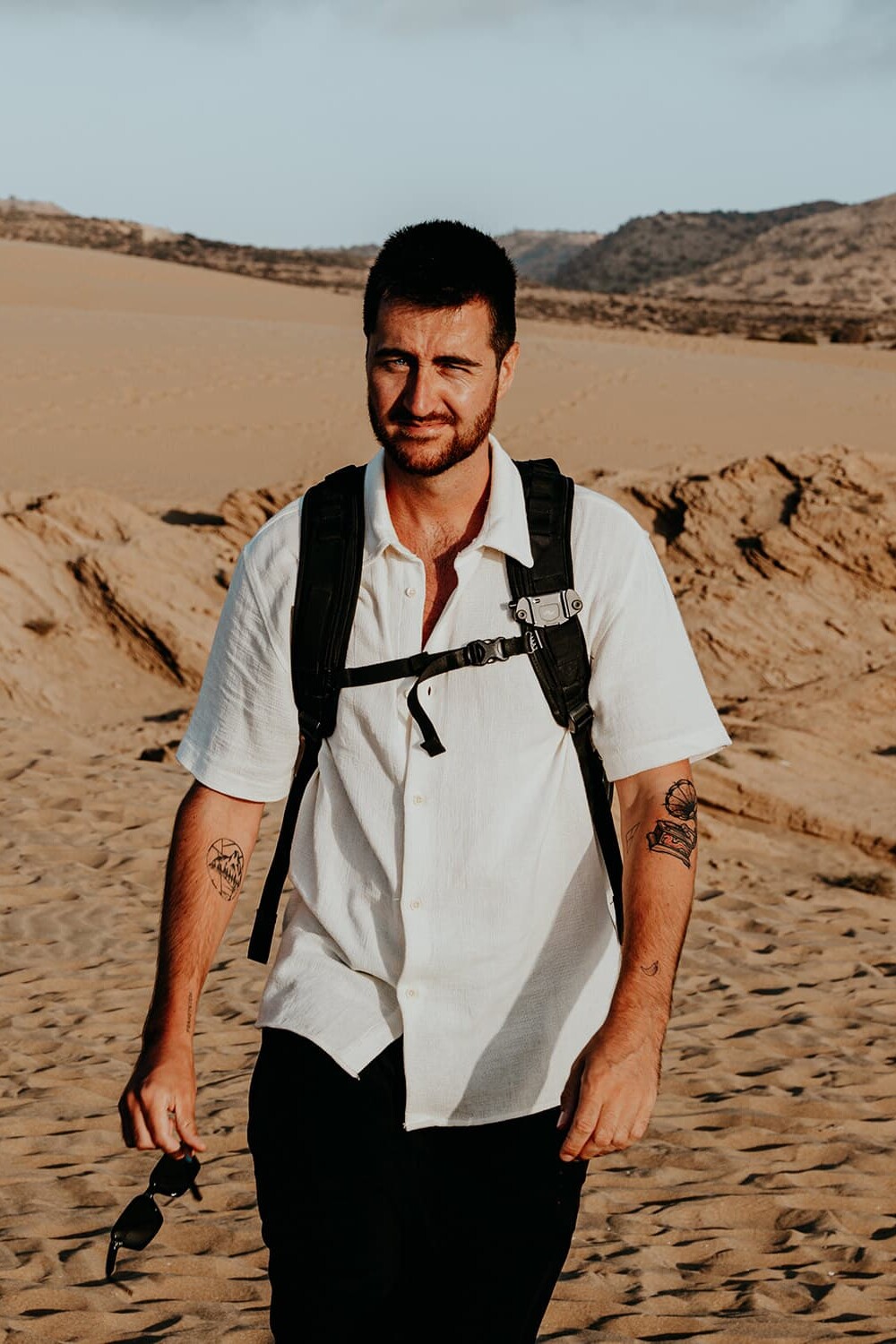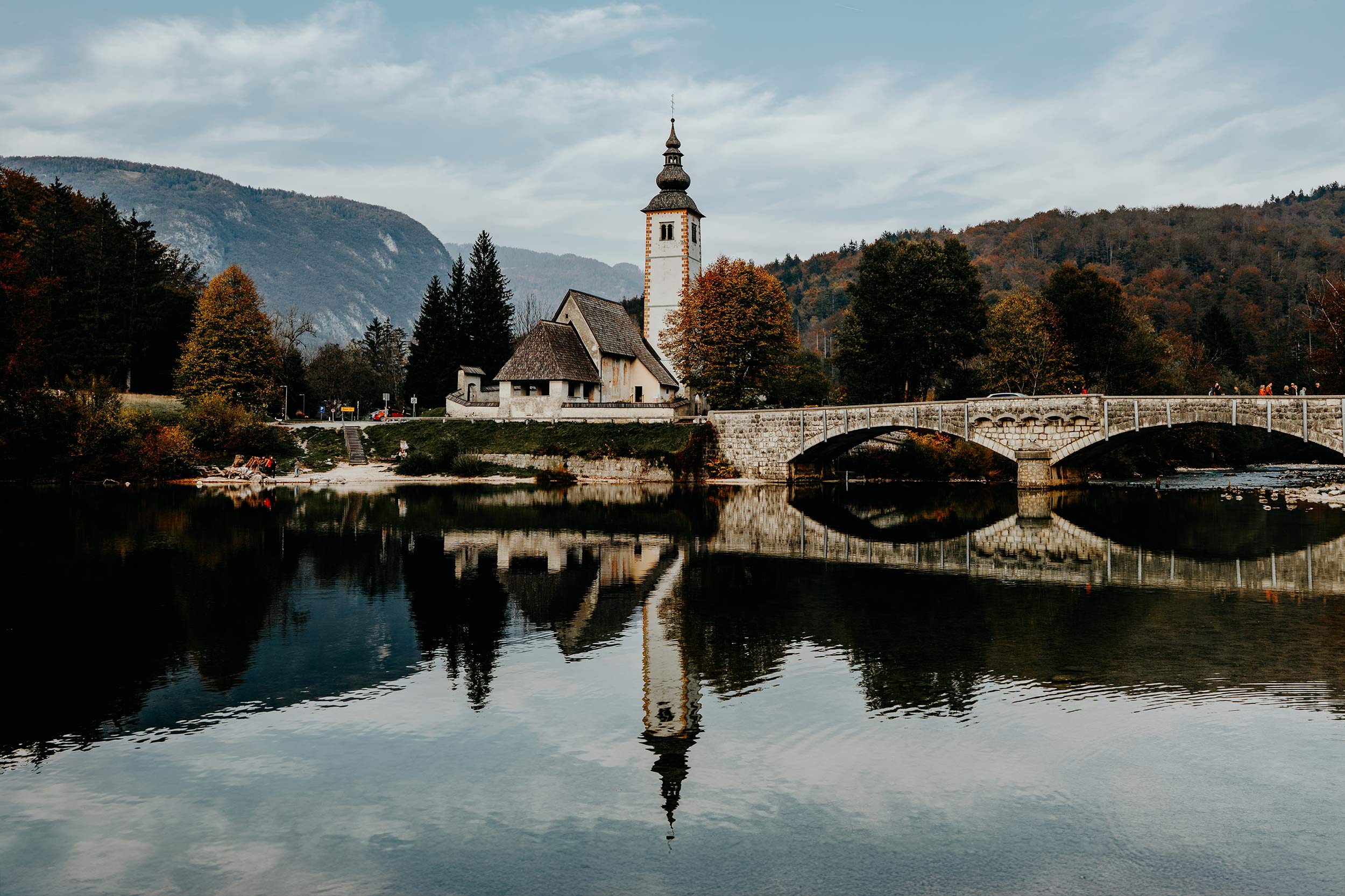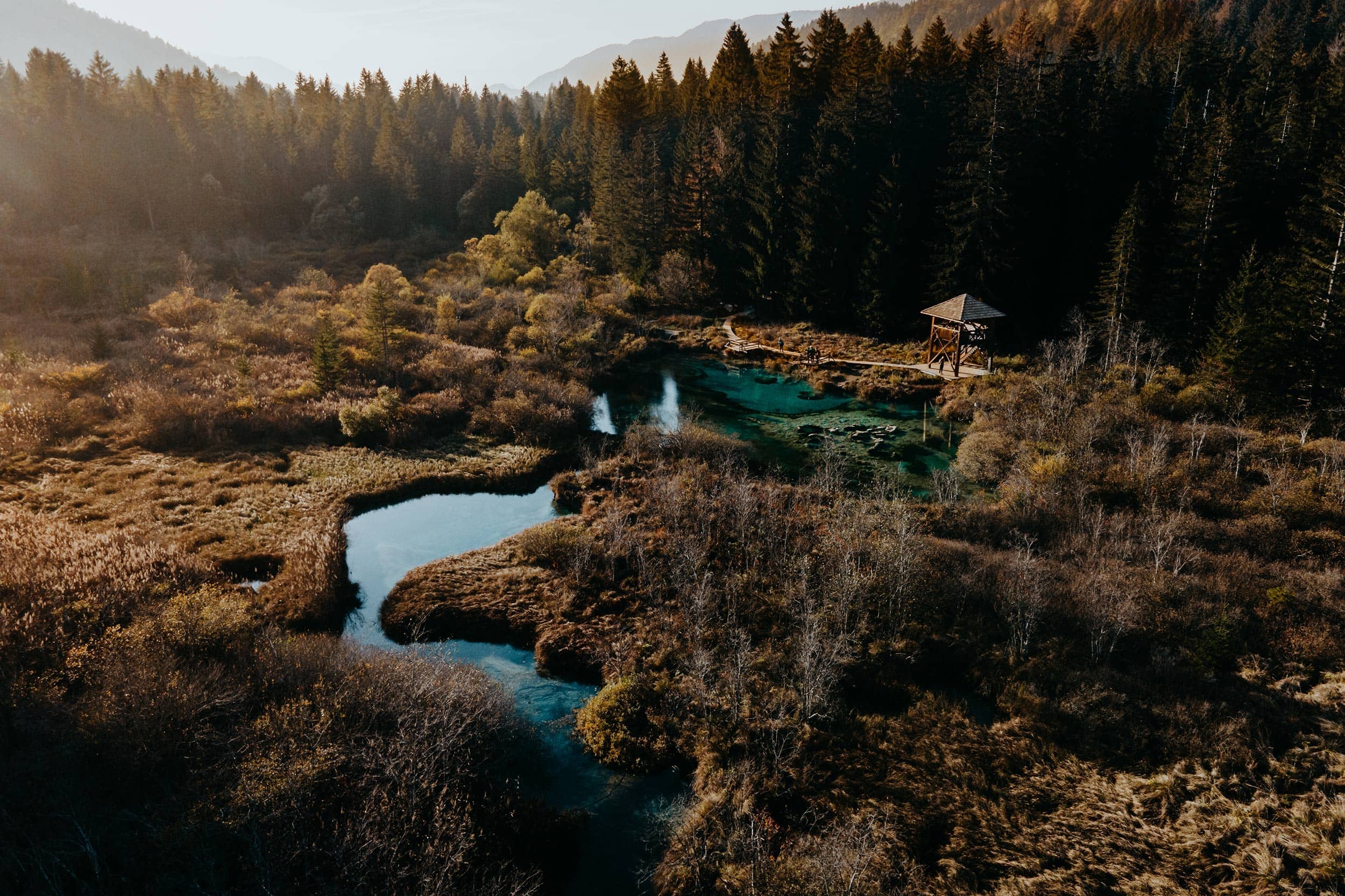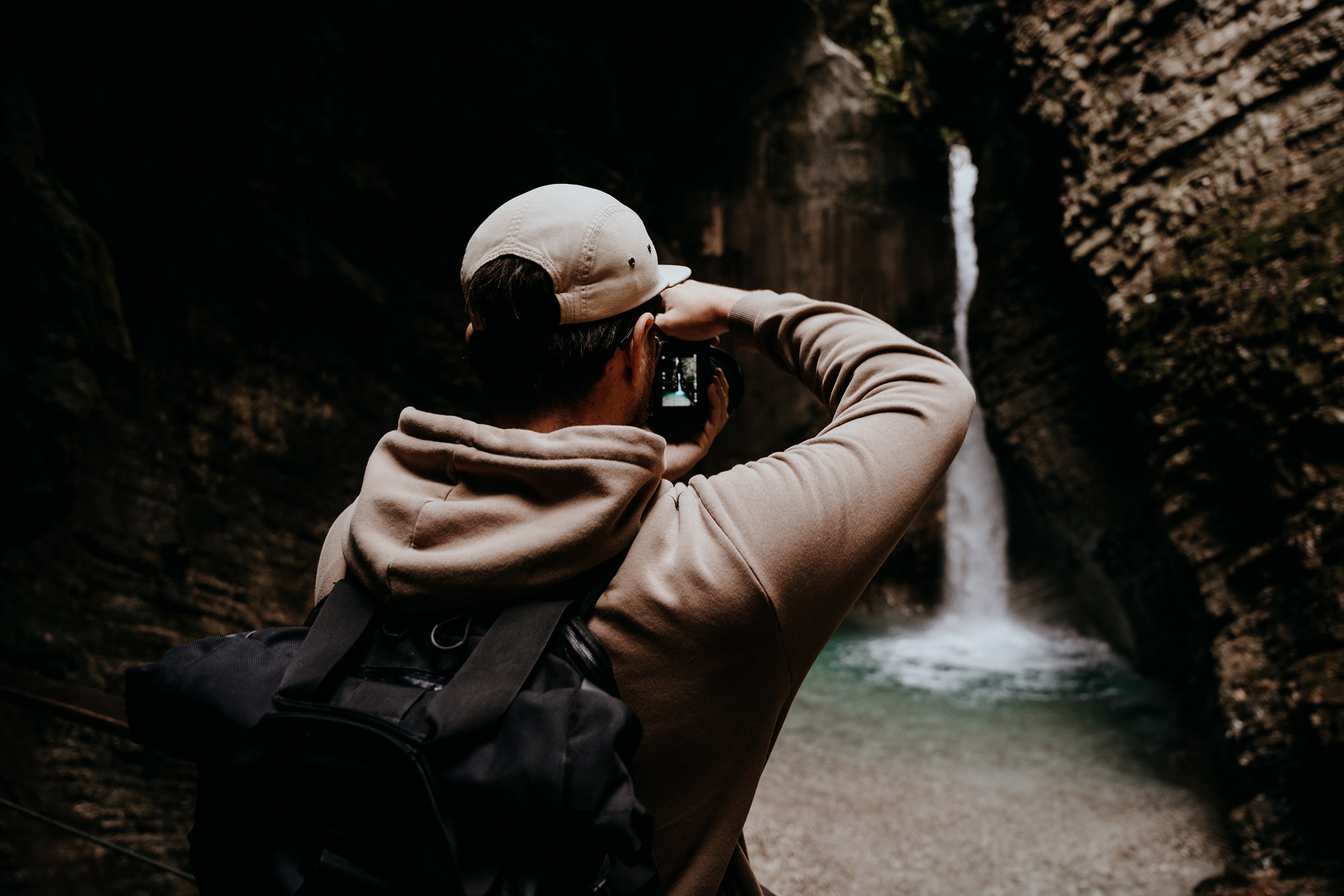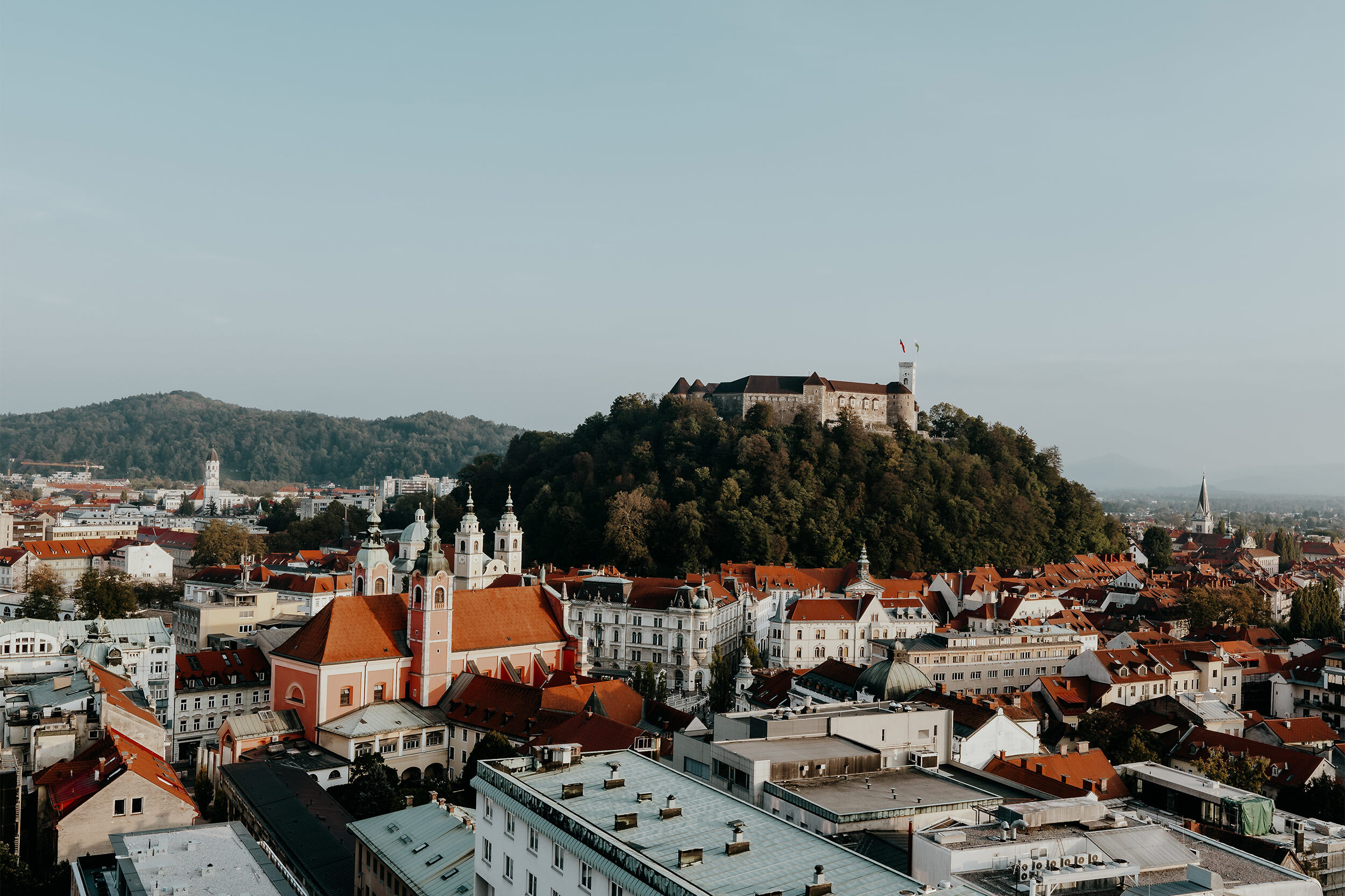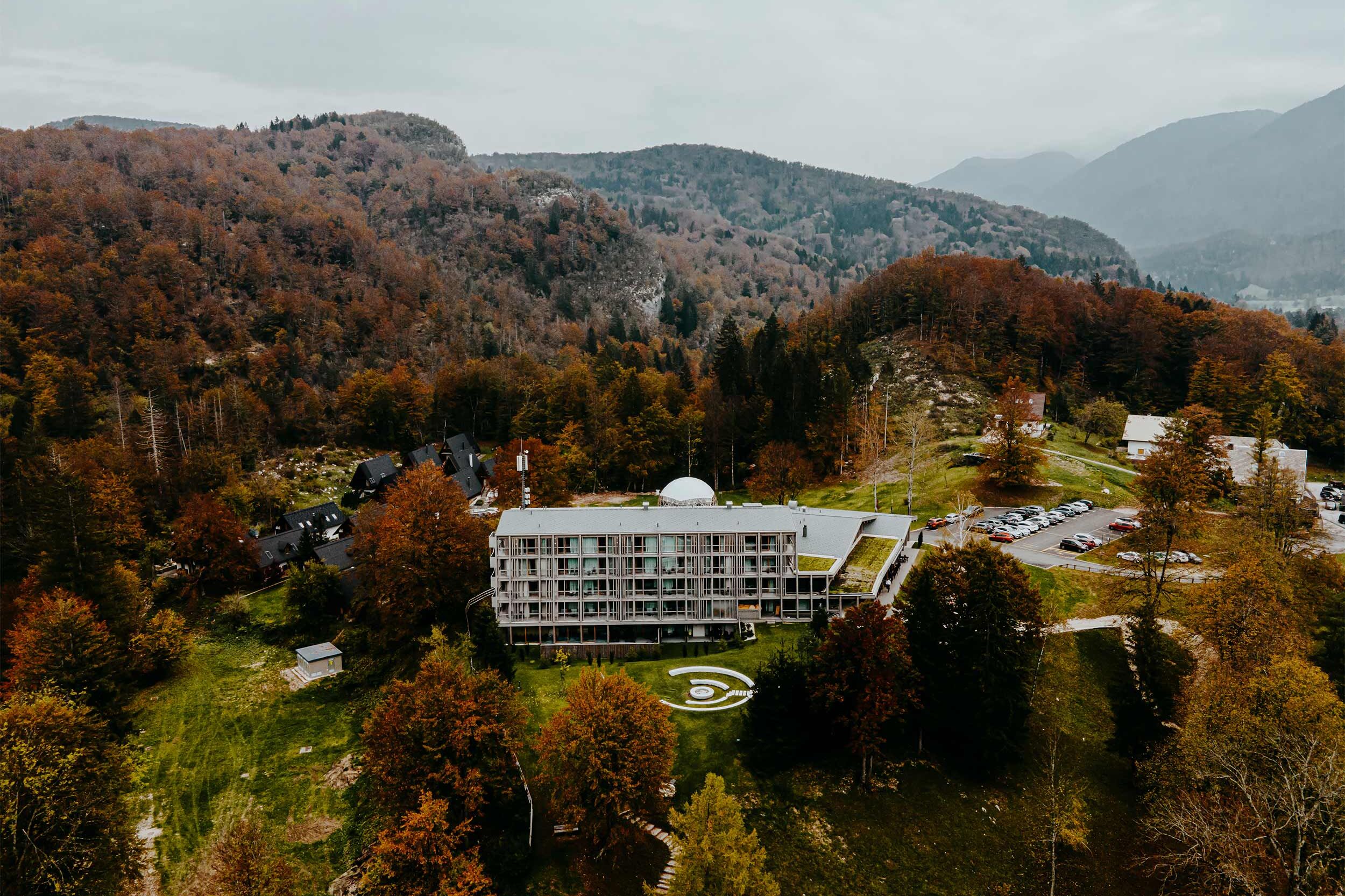As a road trip aficionado by heart, a winding mountain pass like Vrsic is set to get me hyped up.
Running between Kranjska Gora and the pristine Soca valley, the Vrsic pass is without question one of the most spectacular drives in Slovenia, as it showcases the immense beauty of the Julian Alps in an utterly fascinating way.
After driving the Vrsic pass twice (in fall and winter), it’s safe to say that no Slovenia road trip itinerary is complete without a drive over the exciting, yet slightly feared mountain pass – there’s simply nothing that matches the feeling of taking on the many hairpin bends, while the mesmerizing views unfold before you.
However, with a height of 1,611m, and exactly 50 hairpin bends to conquer, driving the pass comes with quite a unique set of challenges, which is why I’ve put together this guide.
This in-depth guide includes everything you need to know before driving the Vrsic pass, including where to stop, car rental in Slovenia, the best time to visit – as well as some of my personal tips.
Enjoy, and remember to keep your eyes on the road.
If you choose to use any of the links on this page, I may receive a small commission at no extra cost to you. By using these links, you’ll have a direct impact on WTSW and my ability to continue to create free insightful travel content for you. If you find any of my tips useful, you can support me by buying a virtual coffee here.
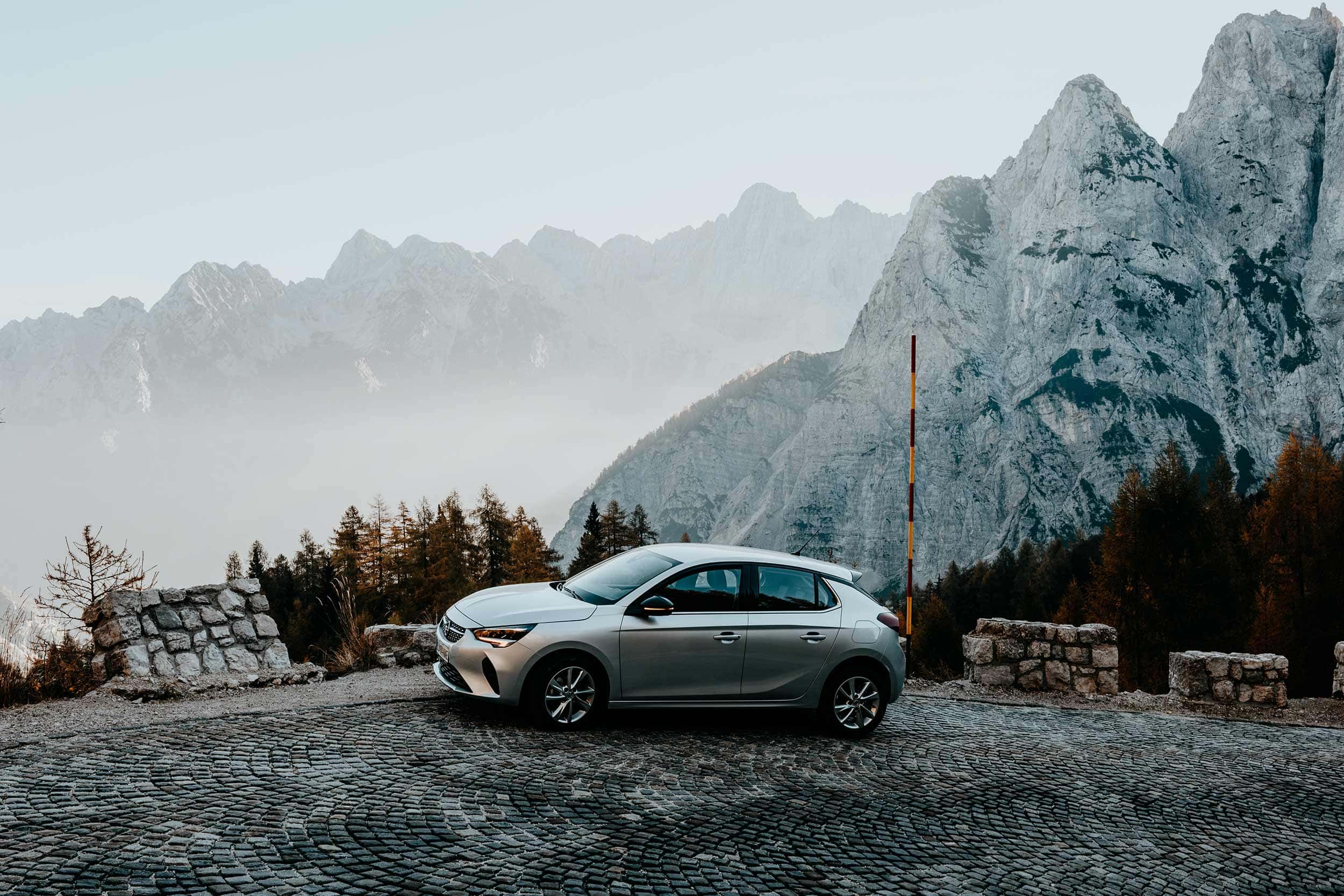
Where is the Vrsic Pass?
The Vrsic Pass is a 1,611m high mountain road amongst the stunning Julian Alps in the northwest of Slovenia.
With exactly 50 hairpin turns, this stunning mountain pass connects two of Slovenia’s most popular areas; Kranjska Gora and the Soca Valley.
Those who’d like to conquer the Vrsic Pass can access the road from Trenta or Kranjska Gora, which makes it an exceptional addition to your road trip through Slovenia.
About the Vrsic pass
The winding mountain road of the Vrsic Pass has been around for more than a hundred years, and has a rich history that dates back as far as World War 1.
But sadly, much of its history is a rather tragic one.
Throughout World War I, the Vrsic Pass served as a crucial supply route for the Austro-Hungarian soldiers battling the infamous Isonzo Front; one of the most brutal battlefronts of the Great War, where a total of twelve battles took place.
Given the importance of this route, the army drafted roughly 10.000 Russian prisoners of war to improve and maintain the Vrsic pass throughout the war.
It was an utterly gruelling task, as it required the prisoners to work under extremely harsh conditions, which, sadly, resulted that many of them lost their lives in the process.
On March 8, 1916, more tragedy struck, when heavy snowfall triggered an avalanche which wiped out the entire camp of prisoners, leaving a death toll of over 300.
At present, the road serves as a war memorial to the lost soldiers, while also being one of the most scenic stretches of pavement in the country, where fifty adrenaline-inducing hairpin turns guide travellers from one Alpine valley to another.
With a height of 1,611m, the Vrsic pass is deemed the highest mountain pass in the whole of Slovenia, making it an incredibly popular destination on any Slovenia itinerary.
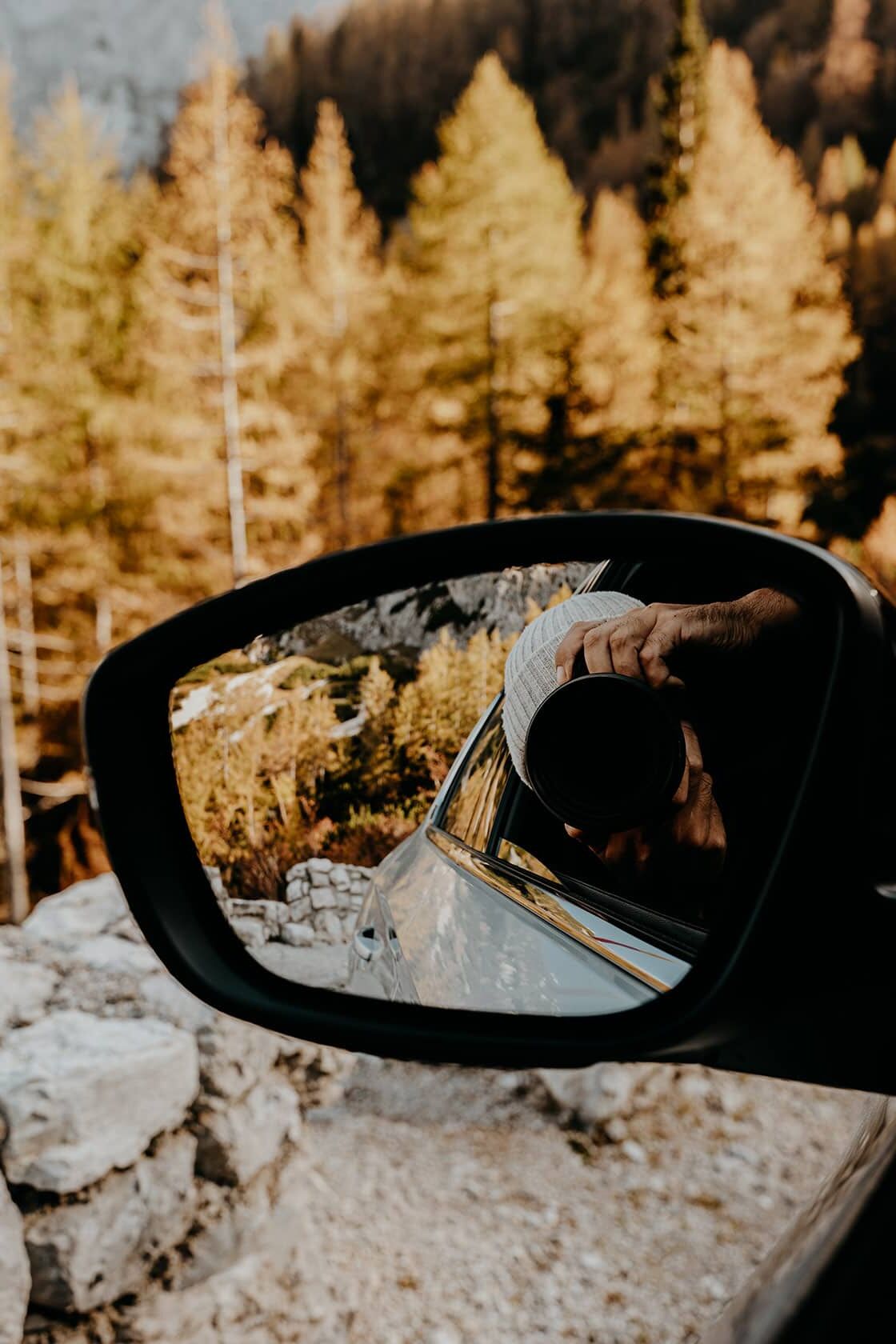
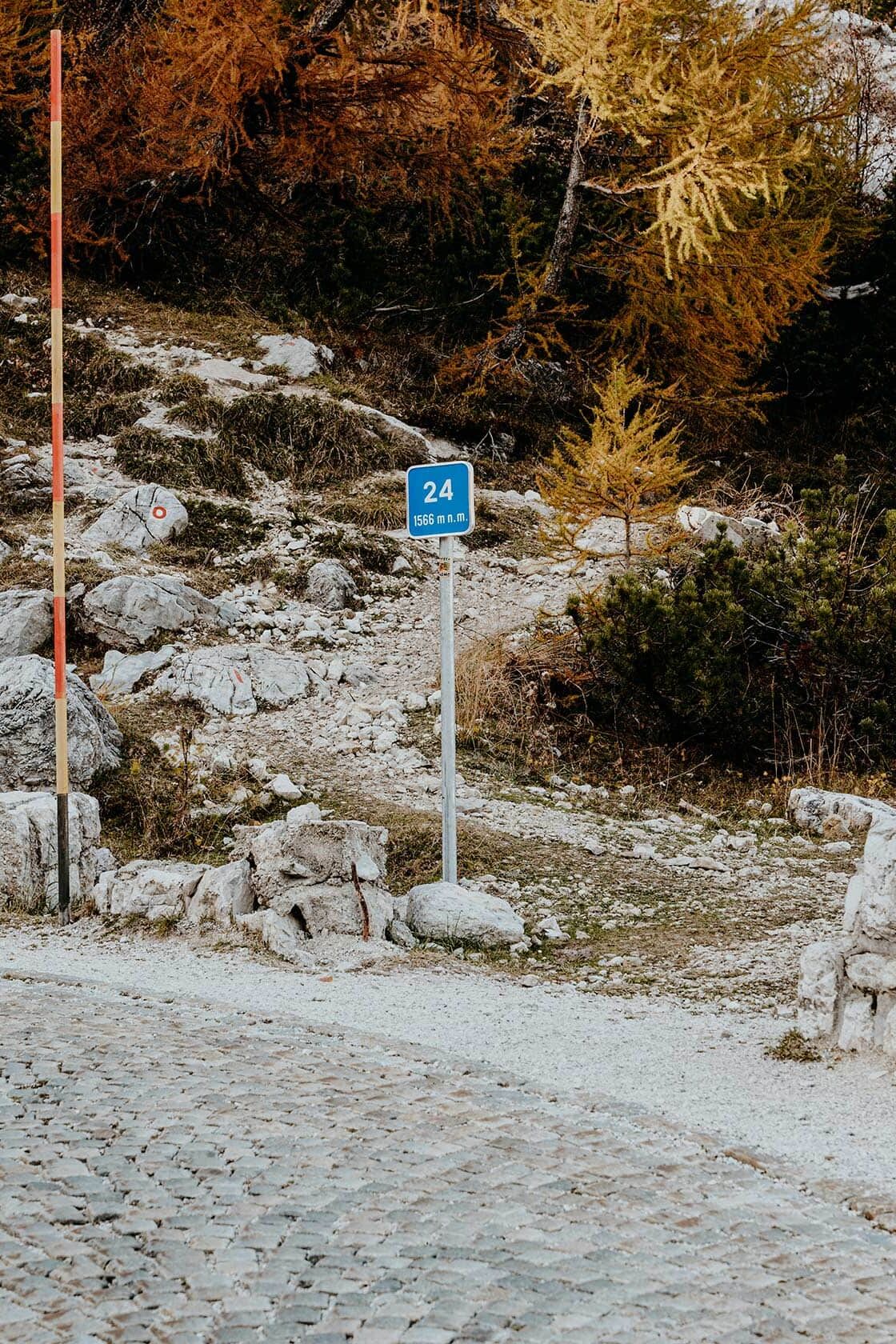
Driving the Vrsic Pass | Where to stop and what to see
Admire Lake Jasna before taking on the Vrsic Pass
While it’s not officially on the Vrsic pass, I do highly recommend dropping by the incredibly scenic Lake Jasna, before zigzagging your way along the winding roads of Vrsic.
Nestled in the foothills of the Jullian Alps, Lake Jasna is a set of two interconnected lakes, surrounded by the stunning mountain peaks of the Triglav National Park, including that of Mangart, Jalovec and Prisank.
Make sure you spend a few moments around the lake and witness how the crystal clear water acts as the perfect mirror to reflect the spectacular peaks of Spik, Razor and Prisank.
After taking in the beauty of Lake Jasna, it’s time to take on the somewhat challenging, yet extremely rewarding drive along the Vrsic pass.
Where | Lake Jasna
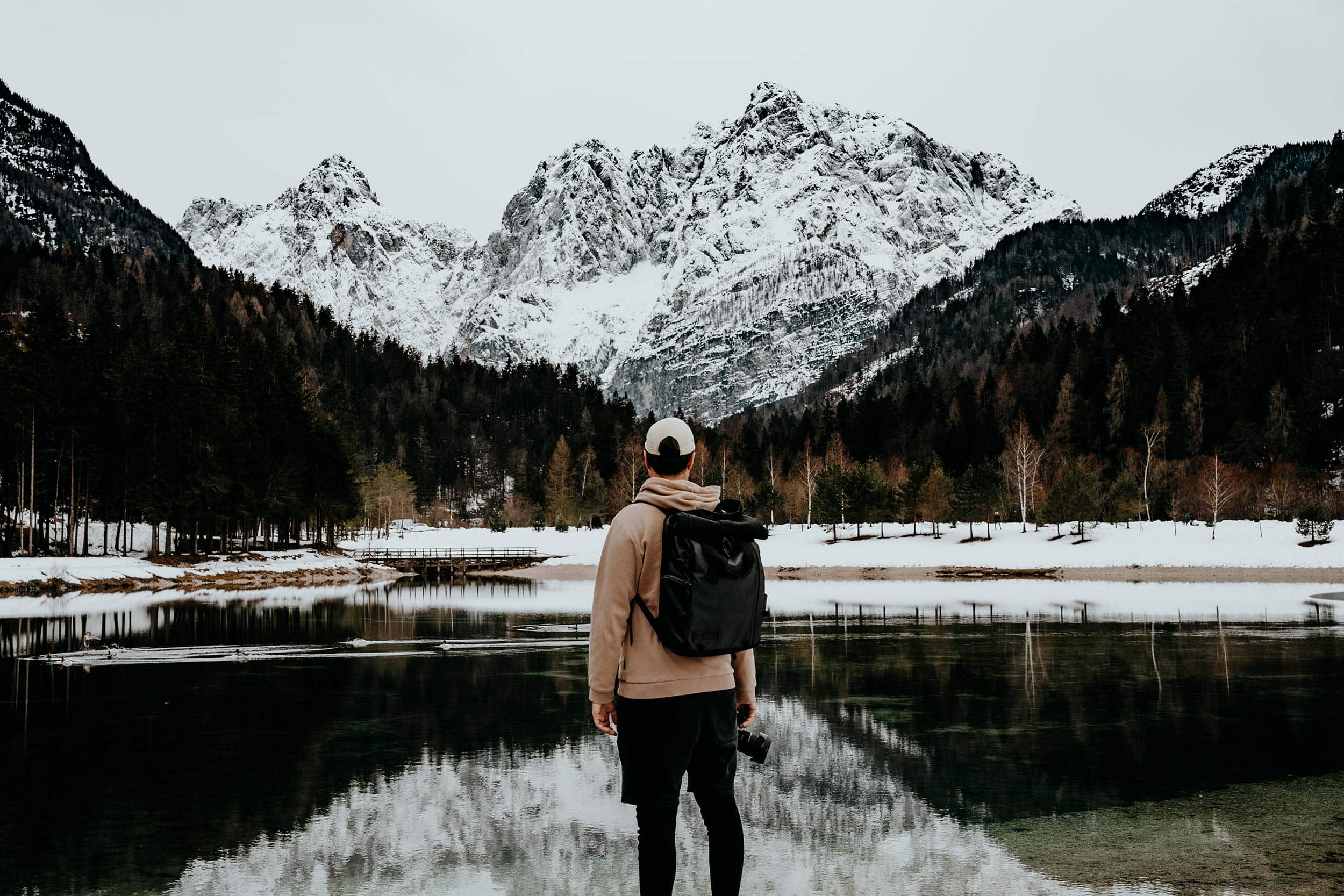
The Russian Chapel
Situated just after hairpin turn #8 from the Kranjska Gora side, the Russian Chapel is a small wooden chapel built in memorial of the Russian prisoners of World War 1, who died here in the process of constructing the pass.
This traditional Russian orthodox chapel is dedicated to Saint Vladimir and was built in the year 1917 by the prisoners who survived the avalanche that had struck the area.
While the chapel is a relatively simple structure, I have to say that it’s still very authentic and impressive, making it an essential stop for anyone driving the Vrsic pass.
Though its purpose is to reflect on the past and honour those who died, the church itself is also the perfect subject for some aesthetically pleasing Instagram shots.
Given the chapel is somewhat of a blink-and-you-miss-it spot, I’d advise keeping an eye out for a blue sign with #8 on it, as the chapel is hidden in a dense forest right after that turn.
Where | The Russian Chapel
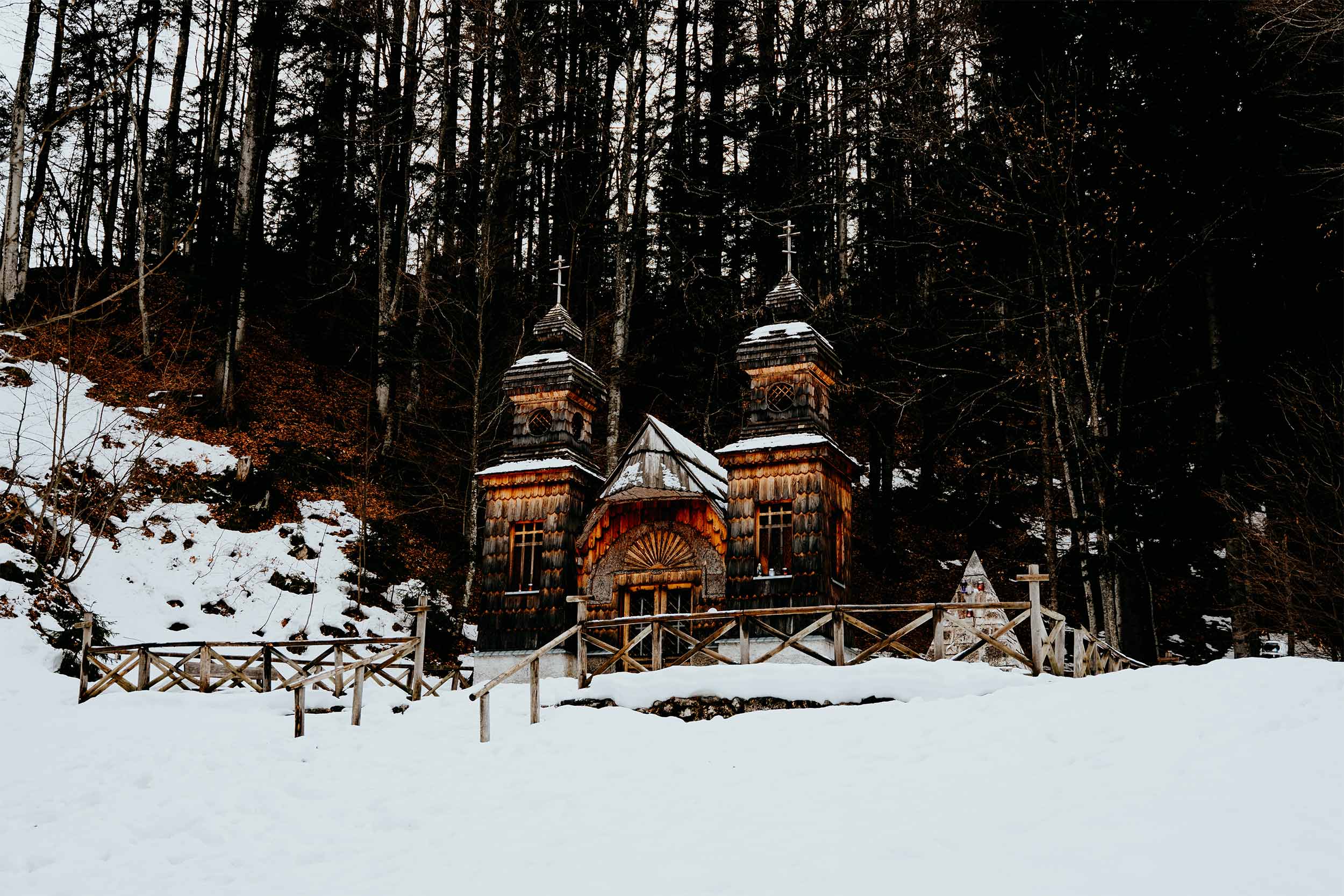
Prisank Viewpoint
The Prisank viewpoint is one of the most popular stops along the Vrsic pass, given it is often referred to as the ideal gateway to the stunning nature of the Triglav National Park.
From Prisank, you can explore Ajdovska Deklica (Heathen Maiden), a carved-out rock formation that looks like the face of a female, as well as the famous Prisank window, which is the best-known mountain window in the Julian Alps, with a size of roughly 80 by 40m.
Prisank is also home to a small mountain meadow with a wooden cabinet, which makes for an ideal place to sit down and enjoy lunch or a cup of coffee. The meadow is located right next to hairpin #16, where you will also find a small parking area.
This area is seriously stunning, so make sure you bring out your camera gear and snap some bangers while exploring the scenic mountain meadow.
Where | Prisank viewpoint
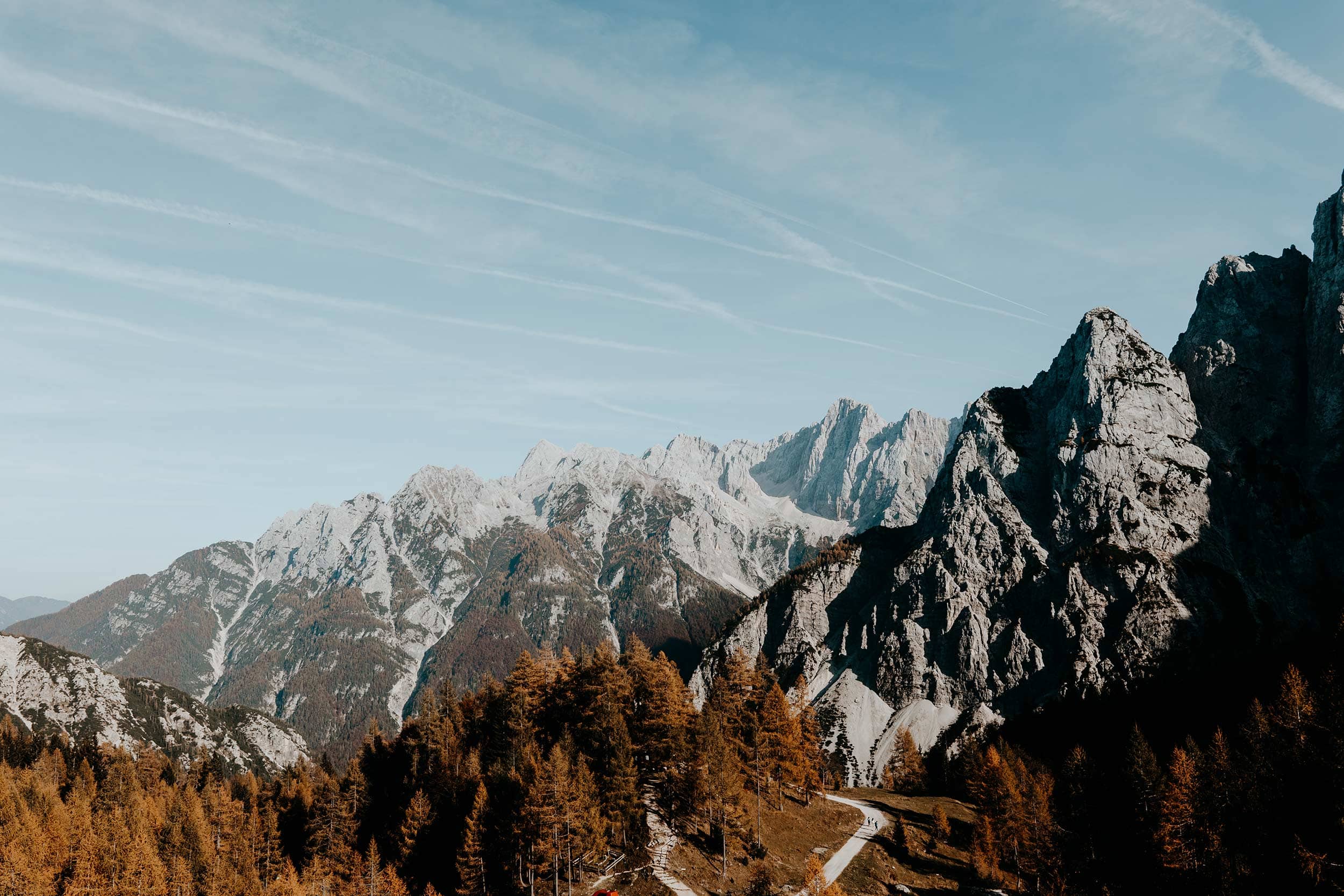
The Vrsic pass – the highest point of the road
After completing the first 24 turns, you’ve finally made it to the highest point of the road; the Vrsic Pass at 1,611 metres above sea level.
From this point, you’ll be welcomed by some of the best views in Slovenia, so drop your car in the parking, and seek out a quiet spot to take in the stunning panoramic vistas of the rugged peaks of the Triglav National Park.
It’s worth mentioning that the Vrsic pass gets extremely busy early in the day, given it’s marked as the starting point for most of the hikes in the Triglav National Park.
If you’re keen to grab a coffee or lunch before taking on the remaining 26 hairpin turns, there’s a mountain hut about 5 minutes from the parking, which serves delicious local food, and excellent coffee too.
Where | The Vrsic Pass
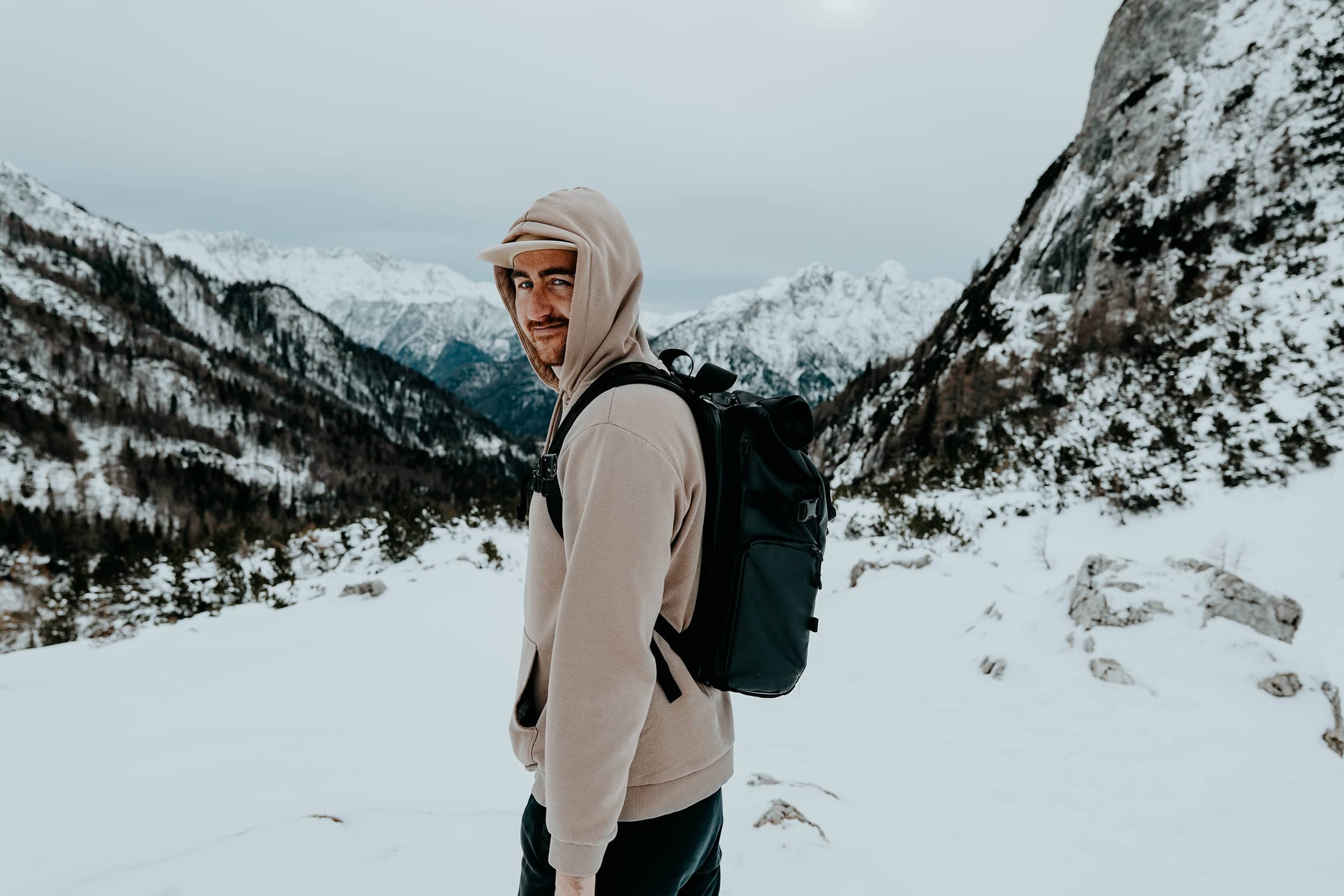
The upper Soca Valley
As you make your way down the winding roads of the Vrsic pass, the views of the Julian Alps slowly give way to the breathtaking beauty of the Soca valley.
With every hairpin turn, the road flattens out further, offering a relaxing drive that allows you to take in the natural grandeur that surrounds you.
But it’s not just the picturesque drive that will capture your heart.
Famous for its distinctive emerald green waters, the gushing Soca river is a constant companion as you make your way in the direction of Bovec, inviting you to stop at just about every turn.
Though the Soca valley breathes unparalleled beauty throughout, I believe there’s one absolute highlight here; the magnificent Soca gorge.
Make sure you stop here, and experience how the powerful Soca river carves its way through the steep, rocky walls of the gorge – it’s truly a spectacle to behold.
Where | The upper Soca Valley
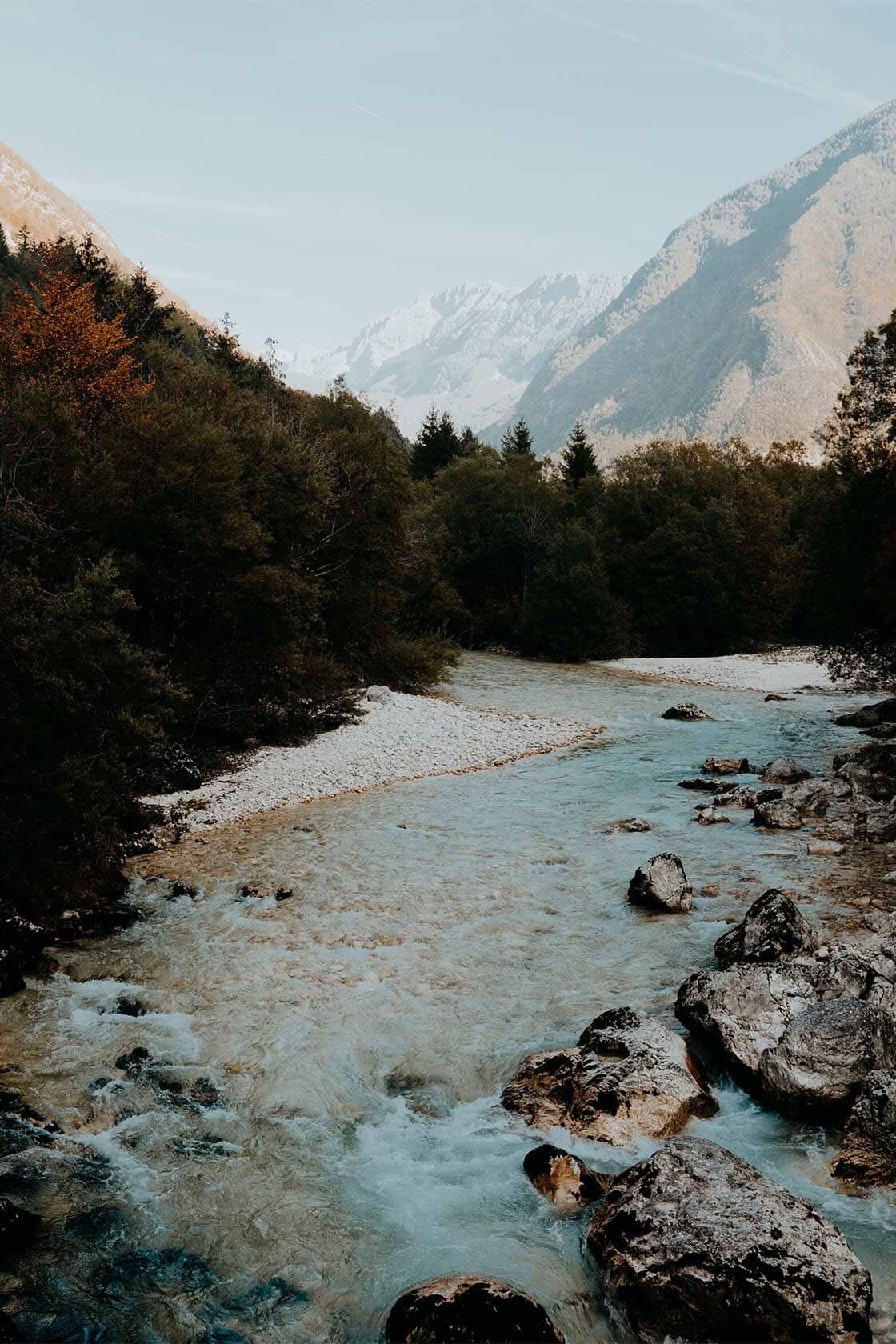
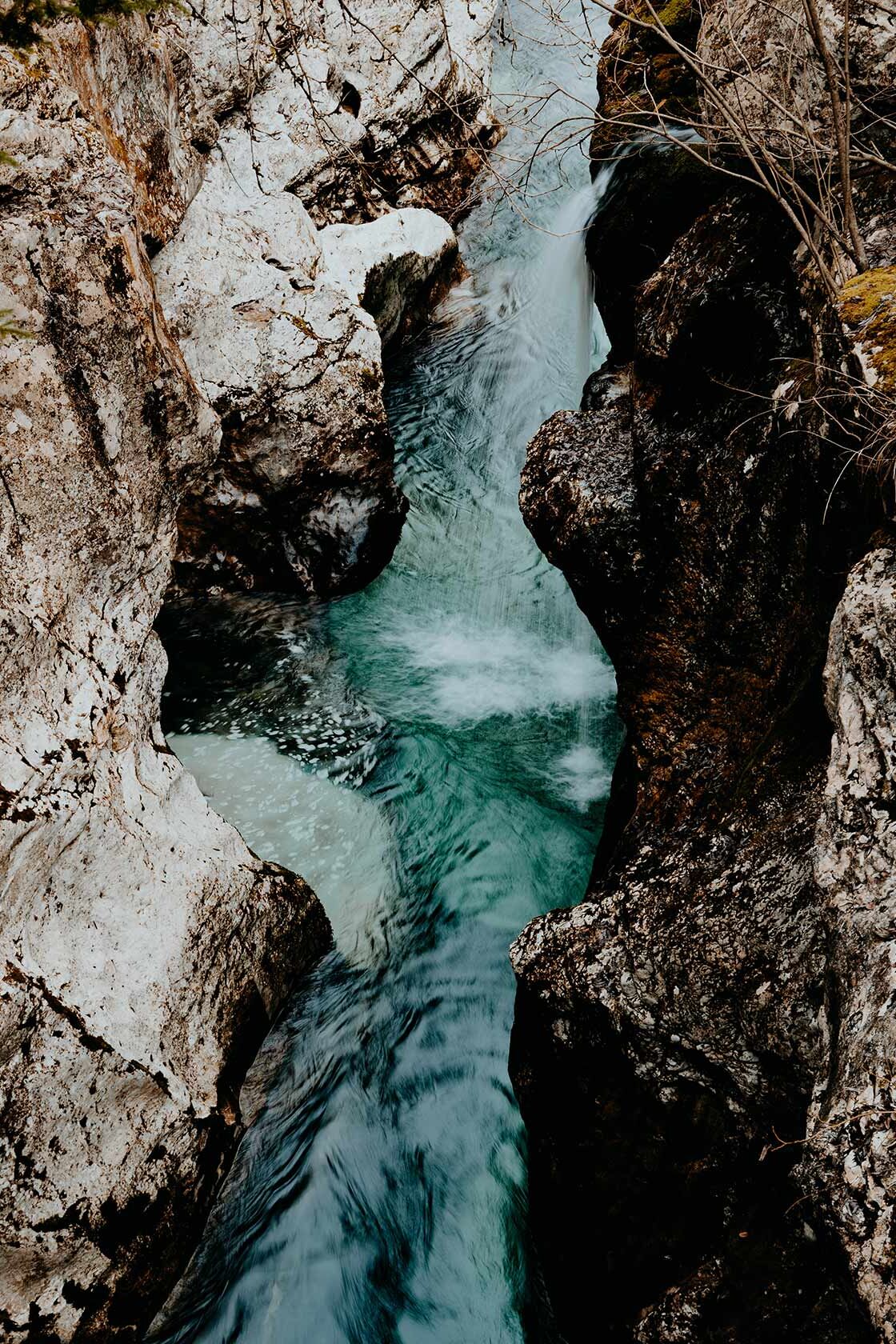
Conquer the road to Mangart Saddle
Those who want to turn it up a notch, continue driving in the direction of Mangart Saddle, Slovenia’s highest mountain road and easily one of the most captivating places in the country.
Marked by extremely narrow parts – just wide enough to fit one car, sharp hairpin turns, and steep drop-offs with sporadically a crash barrier, the road to Mangart is not for the faint of heart, especially during the peak summer months.
However, those who take on the challenge will quickly learn that the reward is absolutely worth it.
Once you arrive at the top of Mangart, you’ll be welcomed by breathtaking panoramic views of the surrounding peaks and valleys – you can even see the lakes of Fusine in Italy in the distance.
Hiking enthusiasts will be pleased to know that some of Slovenia’s most exciting hiking trails start exactly here, at Mangart Saddle.
One word of caution though; while I managed the drive to Mangart fairly effortlessly, I believe there’s nothing that can fully prepare you for the drive up.
For that reason, I’d highly suggest taking it one step at a time, and more importantly; don’t feel rushed by other drivers.
Where | Mangart Saddle
Read more | A guide to Mangart Saddle, Slovenia’s highest mountain road (coming soon)
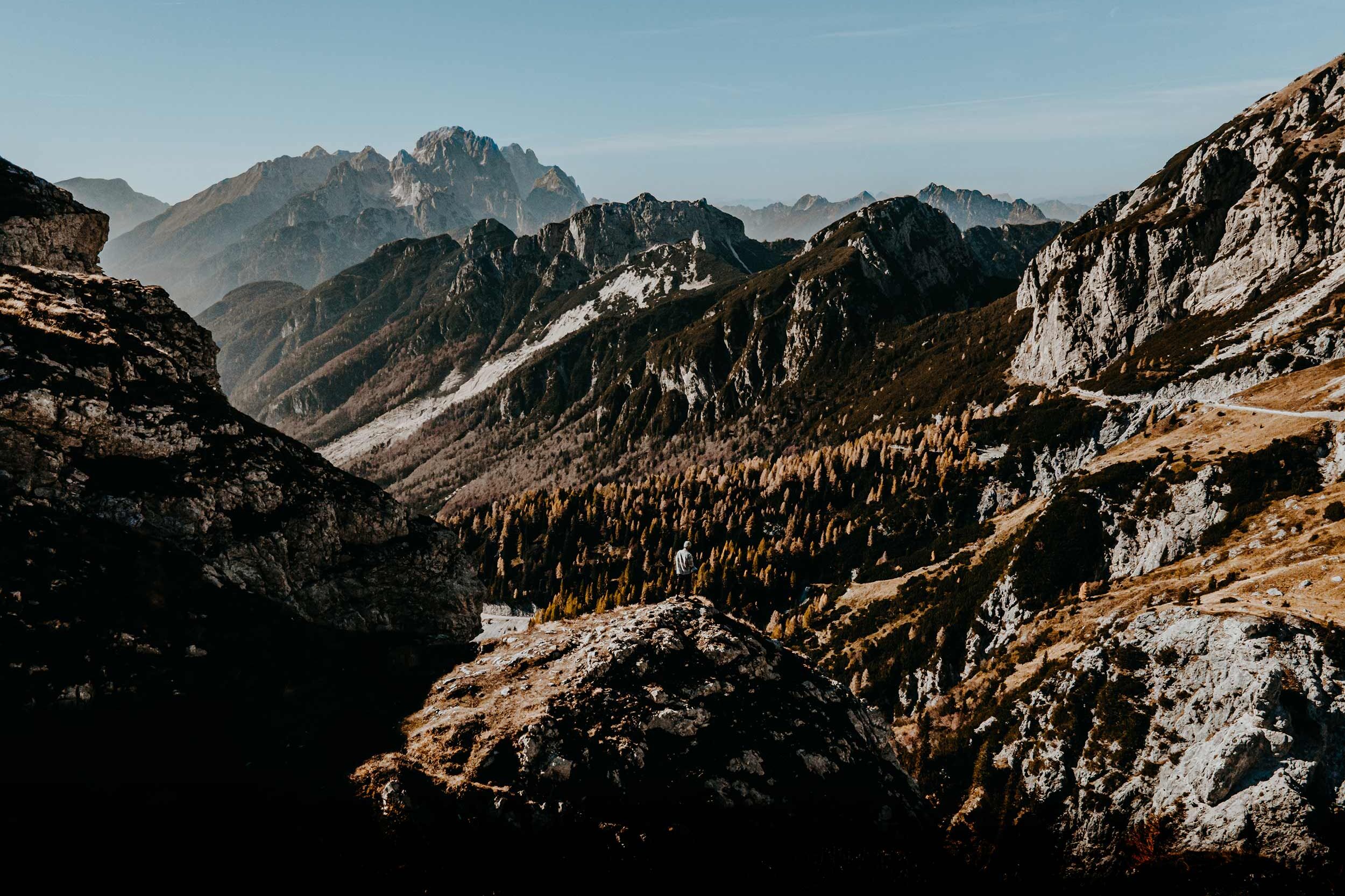
Things to know before driving the Vrsic Pass
Though I firmly believe that experienced drivers will have an easy time driving here, there are a few things that you should know before taking on the winding roads of Vrsic.
After driving the Vrsic pass twice (in autumn and winter), I’ve put together a comprehensive list of useful tips and tricks that will hopefully make your journey as comfortable as mine.
To prepare you for the journey, I’d highly recommend paying attention to the following:
The turns are steep and narrow | Do exactly as Kanye West raps in one of my favourite tracks of Ye’s Late Registration; drive slow, homie – I highly recommended to navigate the hairpin turns at a steady pace (10 to 15km/ph).
Driving experience is a must | To me, driving the Vrsic pass requires at least a few years of driving experience, since the somewhat challenging circumstances are far from ideal for those new to driving.
Go in the early morning | Like so many popular tourist places in the world, Vrsic pass gets extremely busy throughout the day, especially during the peak summer months. For that reason, I can’t stress enough to drive the road in the early hours, when the road is still relatively empty.
There could be road closures in winter | While I’d passed the Vrsic pass on a snowy Thursday in January, road closures are actually pretty common during the winter. In general, the road is open for around 7 months a year, depending on the severity of the winter months. Just to be sure, I’d advise keeping an eye out for the latest updates on road closures on the Vrsic pass here.
Bring lunch, snacks and coffee | While there is a restaurant on the Vrsic pass, I’d highly recommend packing your own lunch, a few snacks and a thermos filled with coffee, to enjoy in the midst of nature.
Keep an eye out for cyclists | Since the Vrsic Pass is popular among cyclists, you’ll share the road with lots of them, especially in the peak summer season. As a driver, it’s therefore pretty important to drive with caution, while also giving plenty of space in narrow areas.
Make use of the parking | Throughout your journey along the Vrsic pass, you’ll notice plenty of parking spaces, and I highly recommend making use of them. Although it’s tempting to take in the views from behind the steering wheel, I believe it’s essential to keep your eyes on the road at all times here. So, if you see something that piques your interest, don’t mind parking along the road, so you can experience it in a relaxing manner.
Limited phone connection is common | Even though Vrsic counts only one road, it is wise to set up your maps for offline use, since phone connection could be limited in the mountains. This is especially handy if you’re planning to do some hiking in the area.
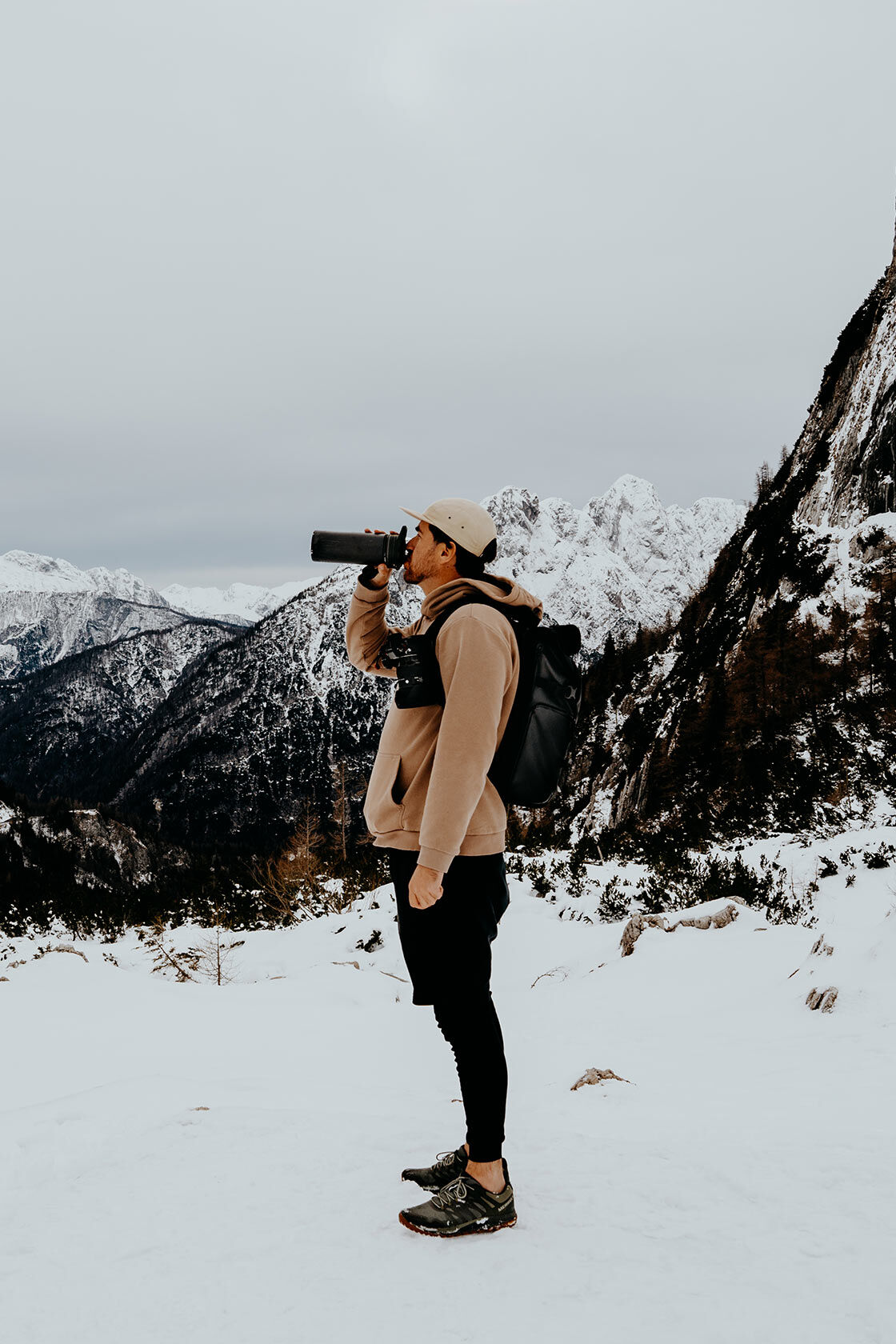
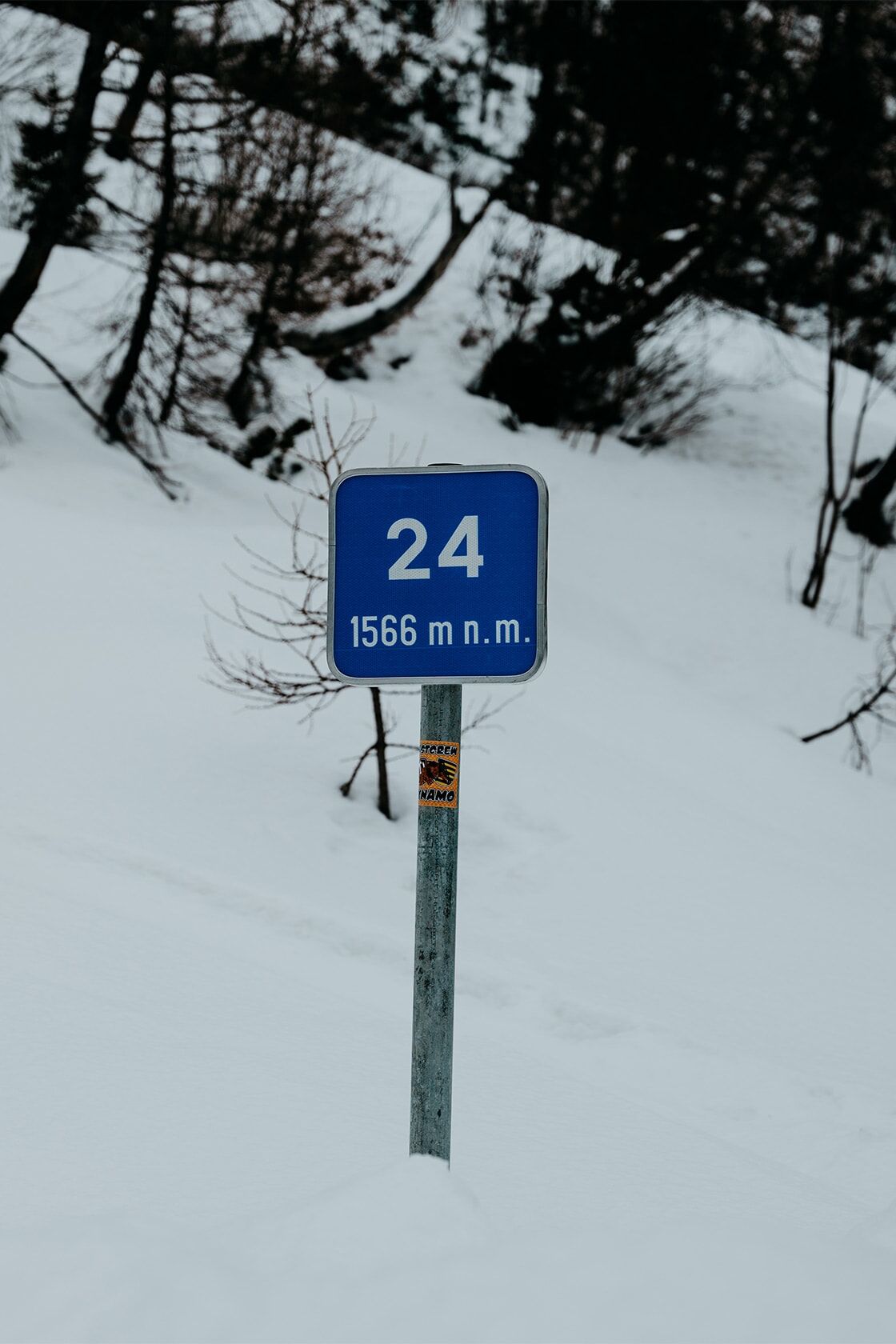
The best time of year to visit the Vrsic Pass
The road along the Vrsic pass is without question one of the most spectacular drives in Slovenia (Mangart I see you), as it showcases the Julian Alps in an utterly stunning way.
I’d highly recommend visiting the Vrsic pass between March and November, when the weather is perfect for hiking and explorations, and it’s almost guaranteed that the pass is open.
But to me, the absolute best time to visit the Vrsic pass is during the shoulder months of March to May and September to November, when it’s significantly less crowded.
I first visited the Vrsic Pass in the fall, and was blown away by the warm orange colours – it truly was an epic time of year to explore Slovenia.
While the Vrsic pass is stunning at any time of year, it is worth noting that the road closes during the winter months, due to heavy snowfall and the potential threat of avalanches.
Since these road closures depend on the severity of the weather conditions, I’d highly suggest checking if the pass is open here, before planning your visit.
Surprisingly, the Vrsic pass was open during my second visit in the midst of winter – so road closures are not set to a fixed period.
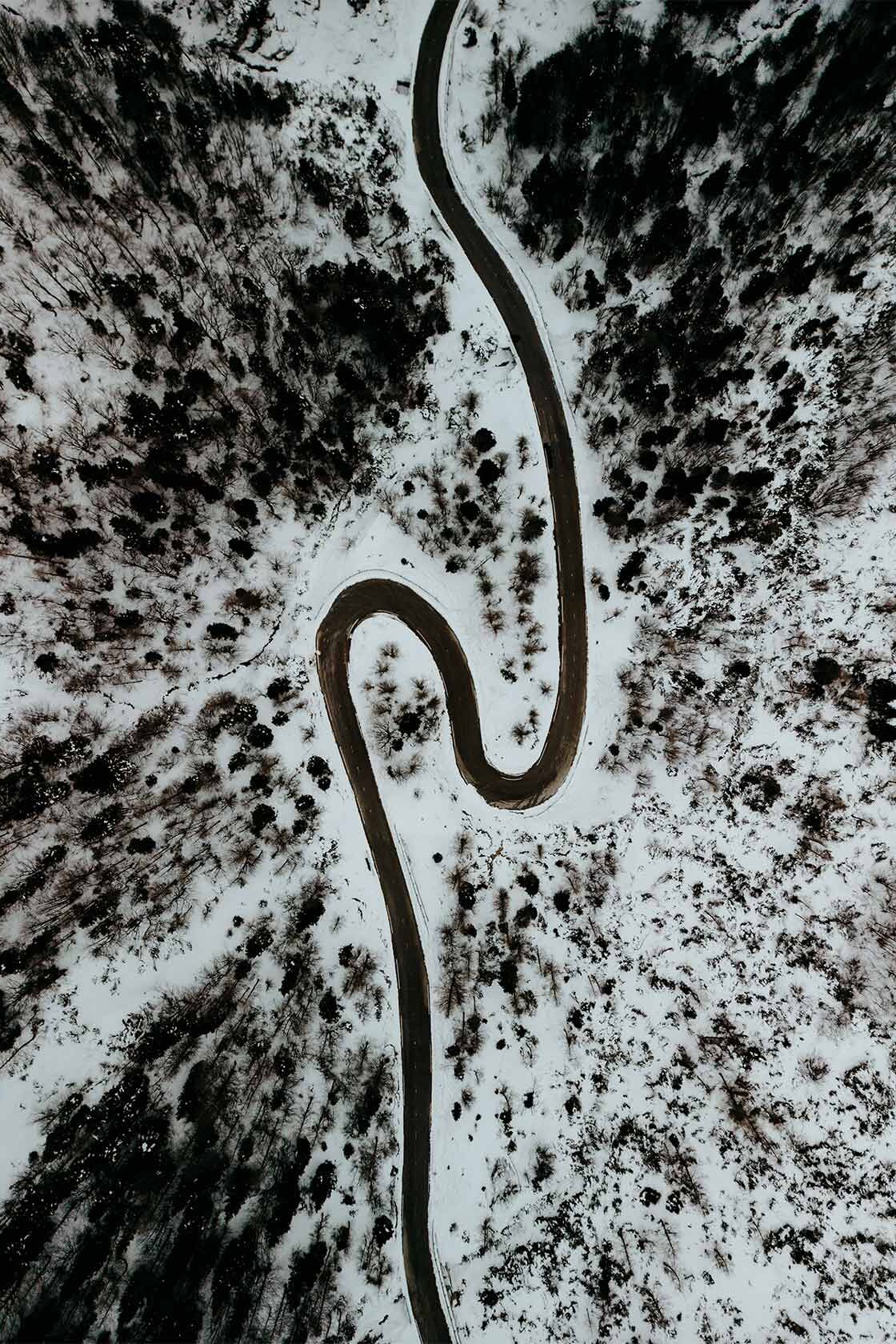
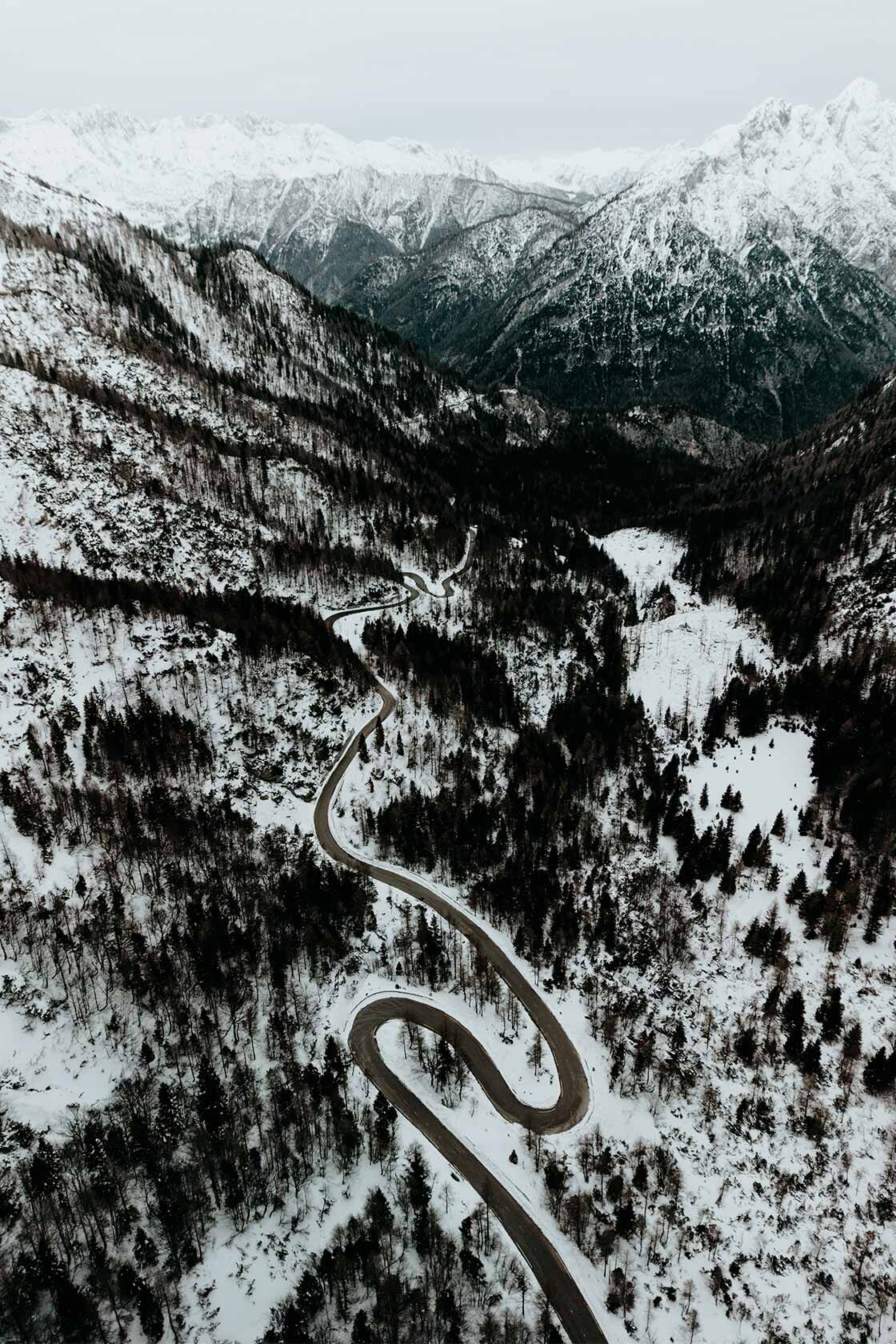
Renting a Car in Slovenia
If like me, you’re planning an epic road trip in Slovenia, I’d recommend sorting out a rental car in advance, so you have all the freedom to visit wherever, whenever suits you.
I always use Rentalcars.com to book my car rentals, as they offer all the major rental car companies, excellent service, and additional insurance – plus, it’s super easy to find yourself a deal here too.
I’ve also written a comprehensive guide on driving in Slovenia (coming soon), so make sure you give that a read too – you can find it here.
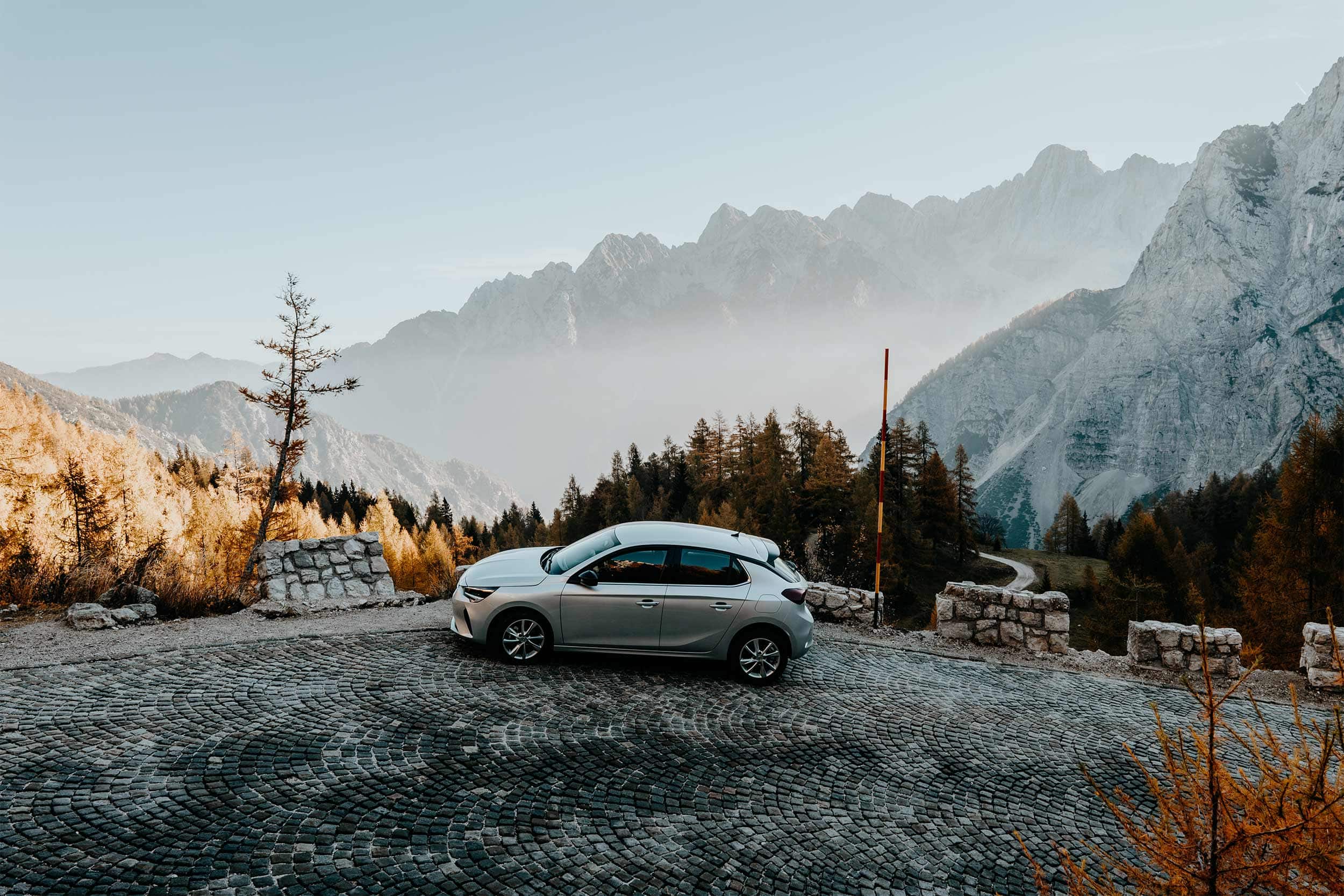
Where to stay near the Vrsic Pass
Given the Vrsic pass is more of a day trip between two popular areas, where you’ll plan to spend the night will highly depend on the starting point of your Vrsic pass journey.
Since I explored Kobarid, Bovec and the Soca Valley before taking on the Vrsic pass, it was quite logical to choose Bovec as my Vrsic pass base.
I stayed at Hotel Soca, a comfortable hotel with spacious rooms in the heart of Bovec, about 20 20-minute drive away from the beginning of the Vrsic pass, making it a solid base from where to start your Vrsic pass adventures.
Depending on your itinerary (make sure you check out my Slovenia itinerary here), you could also opt for a stay in Kransjka Gora or the Soca valley, both are great places to include in your Slovenia itinerary.
Stay safe in Slovenia | Travel insurance
Since Slovenia has plenty of adventurous activities on offer, I advise everyone to sort out good travel insurance before setting out on their own adventure.
While I believe that it’s unlikely to experience any troubles when following the advice in this guide, something unfortunate can happen at any time, whether it’s an injury, a stolen camera, or an accident on the road.
For travel insurance, I use Heymondo, as they offer full covid-19 coverage, as well as a handy app with 24-hour medical assistance. Make sure you check it out – readers of WTSW receive 5% off any insurance policy too.
Cheers!
I’ve been on this travel blogging journey since 2019.
If you appreciate what I do here, these are some ways you can support me.
